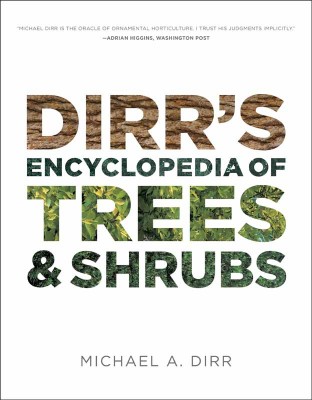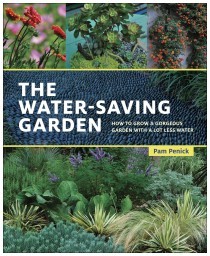 Thanksgiving has come and gone, as has the turkey, the leftovers and the relatives. Having survived Black Friday, Small Business Saturday and now Cyber Monday, it seems to me the world is in a shopping frenzy. Everyone is in a mad race to find the perfect gift for their loved ones and it’s pure mayhem out there.
Thanksgiving has come and gone, as has the turkey, the leftovers and the relatives. Having survived Black Friday, Small Business Saturday and now Cyber Monday, it seems to me the world is in a shopping frenzy. Everyone is in a mad race to find the perfect gift for their loved ones and it’s pure mayhem out there.
This holiday season I’m working very hard to keep things simple in my life by focusing not on consuming, but on appreciating. I’ve had such a blessed year, thanks to many of you, and I’d like to take this opportunity to thank you all for joining me here at my little blog. I’ve truly enjoyed getting to know you all (many on a personal level) and cherish each and every comment you’ve taken the time to leave.
So as a way to show my appreciation, I’m hosting my very first holiday giveaway! Starting today, through the month of December, I’ll be announcing a giveaway or two each week. It might be in combination with another vendor, it might be something directly from me, but each prize is something I’d personally love to receive as a gift, and therefore I hope you would too! Nothing re-gifted and nothing cheesy, I promise!
So with that, I’d like to announce the very first giveaway! …..drum roll please
This week’s giveaway is a copy of Dirr’s Encyclopedia of Trees & Shrubs, by Michael A. Dirr. (950 pages, Timber Press, 2011. List price: $79.95)
The folks at Timber Press were kind enough to send me a copy to review and, in a nutshell, I’d say this is one of the rare books that I’d suggest to each and every client of mine to add to their personal library. Yes, it’s pricey as it is weighty ($80 bucks and 8 pounds) but this book will serve you through the years on so many levels.
First and foremost, I really enjoyed reading this book in large part because of Dr. Dirr’s engaging writing style. Personable, witty, opinionated and poetic his writing captivates the reader. When’s the last time you’ve said that about any type of encyclopedia!
While each description is filled with important detailed information, it’s also lightly sprinkled with personality and opinions. For example, he’s clearly a fan of the sugar maple when he writes “The Sugar Maple. The true nobility of fall-coloring leaves – challenged by many, rivaled by none.”
Or, consider the poetic description of a Katsura tree which paints a beautiful picture in the reader’s mind…”Understated elegance is evident in this species through the seasons – never gauche, gaudy or noisy, always in elegant landscape fashion.”
If you’re a photo-driven person, you’ll appreciate the quality of the images in this book. Photographed by Dr. Dirr himself, it’s clear he’s passionate about plants as the images clearly reflect this. Some are shot from a distance, showing the plant in all its glory, some are close-ups focusing on a plant’s details, and some are taken at unusual yet interesting angles. The Acer family, for instance, has close-ups highlighting unusual bark and interesting seedpods, as well as photos that shine the spotlight on the leaves themselves. And thank you, Dr. Dirr, for taking photos of Japanese maples in all their fall glory! So many books simply tell the reader what color the leaves will be – these photos prove it!
Another aspect of the book that I particularly like is the way in which the specific plant are laid out. Not only is each variety listed alphabetically, like you’d expect in a traditional encyclopedia, but they’re also categorized by ‘specific characteristics‘ and ‘purposes‘. This is particularly useful for people like me, who like to keep concepts such as flower color, fall color or growth habits in mind when designing a garden. How wonderful to have a specific need, such as ‘screens‘ and to be able to quickly flip to an entire section devoted to that topic. Brilliant!
You want to know why this book is so heavy? You can thank Dr. Dirr’s extensive and exhaustive research on many varieties of trees and shrubs, sparing no pages in an effort to keep things brief. For example, there are 36 pages devoted to the many varieties of Viburnum, 28 pages to Acer, 27 to the mighty Oak and 24 pages on Magnolias. I am so grateful to him for putting together, what must’ve been somewhat of a nightmare, the most comprehensive collection of images and information for this many varieties that I’ve seen yet.
I wish, however, the book had a bit more information and recommended cultivars for some of our favorite California natives (even if it made the book 9 pounds!) Take Manzanita (arctostaphylos), for example. Only the A. uva-ursi was mentioned, with nothing about the dozens of other varieties that are so cherished. Another valuable shrub to us West Coast gardeners is the Ceanothus. While Dr. Dirr mentions just a few of the many varieties available, he does kindly direct those wanting more specific information to another book, which I found very helpful. There are, however, several other California natives that are mentioned such as Douglas Fir, Coast Redwoods and our own native Spicebush (Calycanthus occidentalis) which more than make up for the few that fell by the wayside.
At the end of his introduction, he sums it up best: “May the book provide inspiration and education, and guide you to the best of the new (and perpetually reliable) woody garden plants.” Dr. Dirr, I have no doubt it will.
Want to get your hands on one of these gems? All you have to do is head on over to the Timber Press site and enter your name and they’ll pick a winner December 2nd. It’s that easy!
Best of luck, everyone, and make sure you check back regularly for my next giveaway (here’s a hint – it’ll help you get a grip on gardening!)
Oh, and if you’re interested in reading other reviews of this book, head on over to these bloggers’ sites to read what they have to say. I think you’ll find that we’re all on the same page here (no pun intended) and give this book a double thumbs-up!
- J Peterson Garden Design ~ Jenny Peterson
- Gardens of the Wild, Wild West ~ Mary Ann Newcomer
- North Coast Gardening ~ Genevieve Schmidt
- Western Gardeners ~ Jodi Torpey
- The Grumpy Gardener ~ Steve Bender
- Gardens by Kelly Productions ~ Kelly Norris
- Gardener to Farmer ~ Jean Ann Van Krevelen







12 Comments
This is what I want to spend my winter reading!!
I received this book about a month ago and it will take me the winter to get through it.
Eileen
I have the equally heavy 1997 edition – very well thumbed! A fabulous reference and worth every penny (especially if it’s free).
I agree with you, for broader coverage, especially on the numerous Manzanita cultivars, I’d tolerate a 9lb book 😉 That said though, this sounds like a wonderful reference text, and not one I was familiar with until this post. Thanks for pointing it out. So often I find books like this to be lacking in quality photographs. I’m definitely going to have to find a copy to peruse!
I completely agree, Curbstone! Books like this so often have less-than-inspiring photographs, and having just written a book myself I’m totally blown away that Dr. Dirr took all his own photos! Very rare to find in such a detailed author and book.
That is one book that will come in handy now that I am going to become a Master Gardener next year.
Thanks!
Absolutely, Laura! You MUST have this – head on over to Timber Press and enter away!!! Best of luck…..
Thanks, Rebecca! I’m looking forward to seeing your giveaways. The Dirr book sounds valuable though perhaps a little overwhelming.
Oh, Barbara, it’s not overwhelming at all – heavy, yes, but not overwhelming (unless, of course, you were hoping to sit down and read it all at once!) Don’t forget to head over to Timber Press’s site to enter the giveaway! I’ll keep my fingers crossed for you!